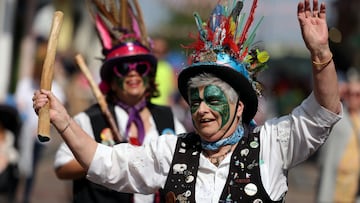What is May Day? Why isn’t it celebrated in the US?
May Day has long roots tracing back to European pagan traditions, but is now much closer related to International Worker’s Day that coincides with the date.

May Day celebrations date back to the time of the Roman Republic. However, more recent history has completely changed the basis of the holiday and how people picture it. While there are still people that dance around maypoles and wear crowns of flowers, the day more often now conjures images of tanks rolling through Red Square or masses of people marching in cities to continue the fight for better working conditions.
The US has a complicated history with May Day. The United States doesn’t formally recognize 1 May as a national holiday; however, you may find some communities that have festivals dedicated to youth, spring, and flowers. Workers in the US honor and celebrate the struggles and achievements of workers and their unions the first Monday of September.
May Day: Celebrating youth, spring, and flowers
During the Roman Republic, a celebration to honor Flora, goddess of youth, spring, and flowers arose. The first of May was in the middle of the weeklong festival of Floralia. With the expansion of the empire it reached the British Isles, where the first of May just happened to be when the Celtics celebrated Beltane. That festival was much like Floralia, so the two were essentially mashed together to become what would become May Day which would come to be a cherished holiday across Europe.
The holiday’s presence in the United States would for a long time be an obscure tradition. But with the arrival of boat loads of immigrants in the 1800s, the holiday would be purposed to save them from the “cheap commercial amusements of the day” by what historian David Glassberg called the nation’s “genteel intellectuals.”
Beginning in the 1870s, the resurgence of May Day in the United State began. Over the following years, public and private schools taught generations of students the tradition of “a-maying” where they would gather flowers and dance around the maypole on the first of May.
May Day of the workers
The Second International, an international federation of socialists and trade unions in Europe, voted in 1889 to organize a day of demonstrations the following year. The date they chose was 1 May, the anniversary of an 1886 strike in Chicago that ended in bloodshed known as the Haymarket Riot. That date had been chosen to celebrate a victory almost a decade earlier establishing the eight-hour workday, that incidentally was never enforced.
After a series of bloody incidents between workers and the authorities, Congress finally passed legislation to establish the first of September as Labor Day in 1894, hoping to move away from the united, international working class celebration of 1 May. Thus, American workers take to the street on the first Monday in September to continue the struggle for better working conditions.






